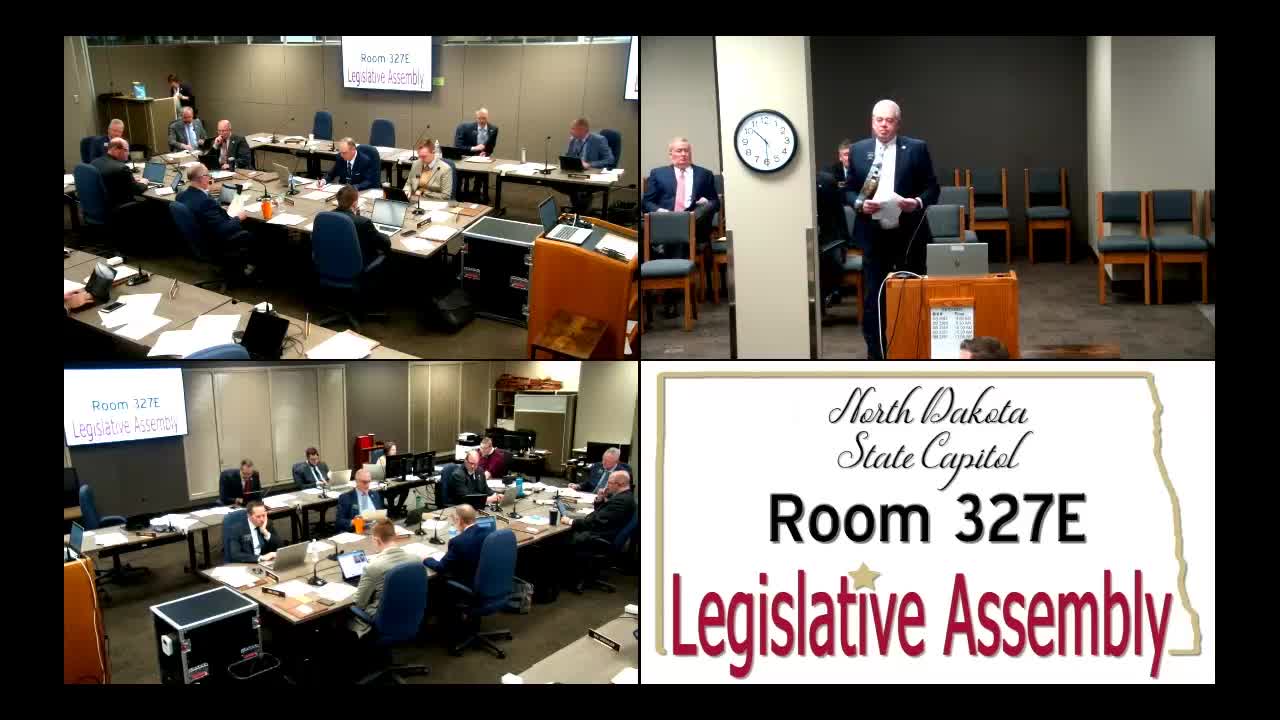Senator Inget advocates for new oil-producing county definition in North Dakota
March 11, 2025 | Finance and Taxation, House of Representatives, Legislative, North Dakota
This article was created by AI summarizing key points discussed. AI makes mistakes, so for full details and context, please refer to the video of the full meeting. Please report any errors so we can fix them. Report an error »

The North Dakota State Legislature's Senate Finance and Taxation Committee convened on March 11, 2025, to discuss Senate Bill 2397, which aims to redefine the classification of oil-producing counties for funding purposes. The meeting, led by Chairman Hedden, featured testimony from Senator Mark Ingham, who highlighted significant disparities in oil production among counties.
Senator Ingham, representing District 2, emphasized that the current definition includes counties like Burke and Divide, which do not produce oil at levels comparable to the major oil-producing counties—Dunn, McKenzie, Montrail, and Williams. He argued that this misclassification prevents smaller counties from accessing vital transportation infrastructure funding, which is crucial for maintaining roads heavily trafficked by oil field operations.
Ingham provided specific production figures, noting that Burke County produced approximately 3.5 million barrels of oil in 2023, while Montrail County alone produced 82 million barrels. He expressed concern over the increasing wear on rural roads due to the influx of heavy truck traffic associated with oil drilling activities, stating that local infrastructure is struggling to keep pace with the demands placed upon it.
The committee also heard from Jeff Simon, Executive Director of the Western Dakota Energy Association, who supported the bill and reiterated the need for a more equitable definition of oil-producing counties. He pointed out that the current threshold of $5 million in gross production tax revenue is insufficient, as it does not accurately reflect the production capabilities of smaller counties. Simon suggested that a production-based metric would provide a more stable and fair assessment of a county's status as an oil producer.
The discussions included inquiries about the existing pipeline infrastructure and the reliance on trucks for transporting oil, with Simon noting that many counties lack adequate pipeline systems. The committee members also explored the potential need for adjustments to the oil tax formula, acknowledging the complexities involved.
The meeting concluded with a consensus on the necessity of addressing the inequities faced by smaller oil-producing counties, with further testimony expected to provide additional insights into the impacts of oil production on local infrastructure. The committee's next steps will involve reviewing the bill and considering the implications of the proposed changes on funding and infrastructure support for affected counties.
Senator Ingham, representing District 2, emphasized that the current definition includes counties like Burke and Divide, which do not produce oil at levels comparable to the major oil-producing counties—Dunn, McKenzie, Montrail, and Williams. He argued that this misclassification prevents smaller counties from accessing vital transportation infrastructure funding, which is crucial for maintaining roads heavily trafficked by oil field operations.
Ingham provided specific production figures, noting that Burke County produced approximately 3.5 million barrels of oil in 2023, while Montrail County alone produced 82 million barrels. He expressed concern over the increasing wear on rural roads due to the influx of heavy truck traffic associated with oil drilling activities, stating that local infrastructure is struggling to keep pace with the demands placed upon it.
The committee also heard from Jeff Simon, Executive Director of the Western Dakota Energy Association, who supported the bill and reiterated the need for a more equitable definition of oil-producing counties. He pointed out that the current threshold of $5 million in gross production tax revenue is insufficient, as it does not accurately reflect the production capabilities of smaller counties. Simon suggested that a production-based metric would provide a more stable and fair assessment of a county's status as an oil producer.
The discussions included inquiries about the existing pipeline infrastructure and the reliance on trucks for transporting oil, with Simon noting that many counties lack adequate pipeline systems. The committee members also explored the potential need for adjustments to the oil tax formula, acknowledging the complexities involved.
The meeting concluded with a consensus on the necessity of addressing the inequities faced by smaller oil-producing counties, with further testimony expected to provide additional insights into the impacts of oil production on local infrastructure. The committee's next steps will involve reviewing the bill and considering the implications of the proposed changes on funding and infrastructure support for affected counties.
View full meeting
This article is based on a recent meeting—watch the full video and explore the complete transcript for deeper insights into the discussion.
View full meeting
